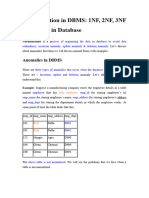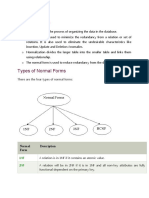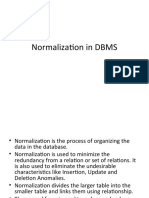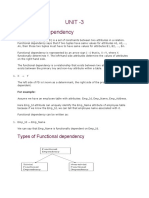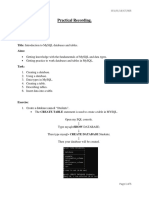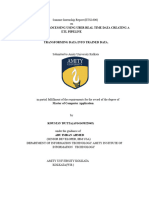0% found this document useful (0 votes)
108 views12 pagesNormalization in DBMS
The document discusses database normalization and different normal forms including 1NF, 2NF, 3NF, and BCNF. It defines anomalies like insertion, update, and deletion anomalies that can occur when data is not normalized. Examples are provided to illustrate 1NF, 2NF, 3NF, and BCNF, showing how data can be structured to conform to each normal form and avoid anomalies. The goal of normalization is to organize data to eliminate anomalies and redundancy.
Uploaded by
Ankush SharmaCopyright
© © All Rights Reserved
We take content rights seriously. If you suspect this is your content, claim it here.
Available Formats
Download as DOCX, PDF, TXT or read online on Scribd
0% found this document useful (0 votes)
108 views12 pagesNormalization in DBMS
The document discusses database normalization and different normal forms including 1NF, 2NF, 3NF, and BCNF. It defines anomalies like insertion, update, and deletion anomalies that can occur when data is not normalized. Examples are provided to illustrate 1NF, 2NF, 3NF, and BCNF, showing how data can be structured to conform to each normal form and avoid anomalies. The goal of normalization is to organize data to eliminate anomalies and redundancy.
Uploaded by
Ankush SharmaCopyright
© © All Rights Reserved
We take content rights seriously. If you suspect this is your content, claim it here.
Available Formats
Download as DOCX, PDF, TXT or read online on Scribd
/ 12






